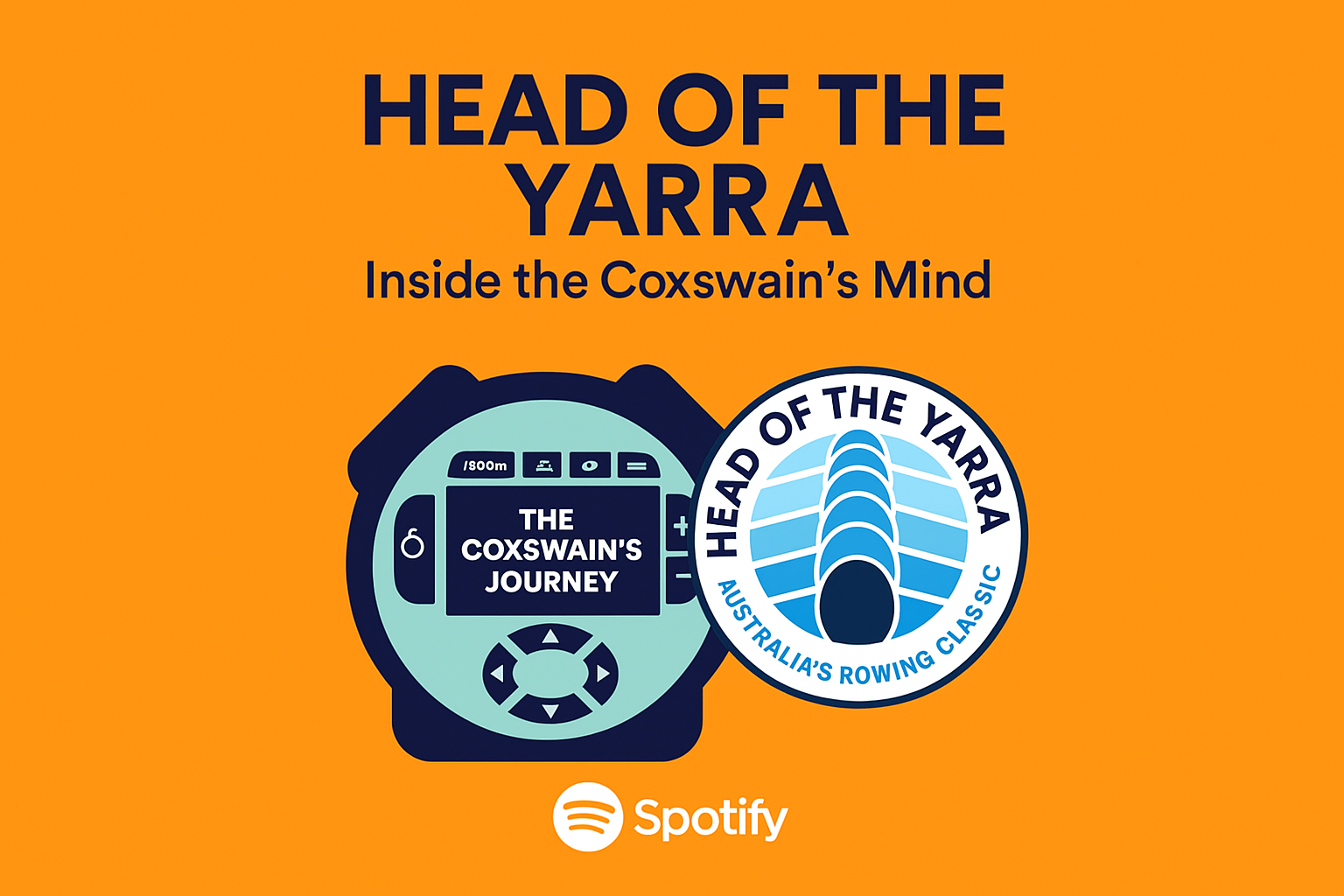Episode 3: Fueling for Endurance — Diet & Hydration Before HotY
The Head of the Yarra is a long, demanding race — and how you fuel your body can make all the difference. In this episode, Jen, from Toowong Rowing Club , and I explore what to eat and drink in the lead-up to the 8km race so you can perform at your best on the day.
We cover:
- What your body needs for sustained endurance
- How to approach carb loading and maintain gut comfort in the lead up
- Fuelling strategies on race morning
- Smart hydration before and after racing
- Post-race recovery tips
Whether you’re racing HotY for the first time or fine-tuning your routine, this episode offers practical, tried-and-true advice to help you stay fuelled, focused, and ready for the river.
In addition, please take a moment to look over the following articles regarding heat stress and glycogen metabolism.
https://www.sciencedirect.com/science/article/abs/pii/S1440244007002095
https://academic.oup.com/nutritionreviews/article/76/4/243/4851715
Key Safety Points for Masters Rowers – Best Practice
- Age and Heat Tolerance
- Masters athletes typically have reduced sweat rates and slower circulatory responses, making them more vulnerable to heat strain than younger rowers.
- Hydration and pacing become increasingly critical, especially in warm or humid conditions.
- Sources of Heat Stress
- Two main drivers:
- Metabolic heat from muscle activity (especially during race starts and sustained efforts).
- Environmental heat (air temperature, sun, humidity, and radiation from water surface).
- These act independently but combine to increase total strain.
- Two main drivers:
- Core vs Skin Temperature
- Core temperature rises mainly with exercise intensity (metabolic heat).
- Skin temperature rises due to the environment (sun, humidity, low airflow).
- Together they determine sweat rate and heat dissipation capacity.
- Sweat and Evaporation Limits
- Effective cooling depends on both sweat production and the environment’s ability to evaporate it.
- In humid or still conditions (e.g., windless regattas), sweat doesn’t evaporate efficiently—core temperature rises faster.
- Behavioural Regulation
- In the real world (unlike lab studies), rowers can self-regulate by adjusting intensity, clothing, and hydration..
- Practical Implications for Masters Rowers
- Pre-hydrate and cool before racing (cold drinks, shade, cooling towels if needed).
- Avoid prolonged warm-ups in full sun.
- Monitor sweat loss and body weight to gauge hydration needs.
- Adjust stroke rate or intensity when heat load is high—performance drops rapidly once overheating begins, so needs to be considered.
- Post-session cooling (hydrate and shade) aids recovery and reduces cumulative heat strain.
NOTE: This is not medical advice, our views are based on years of personal experience, we are not medical practitioners. If anyone has any concerns or require more in-depth information please consult a medical professional.

0 Comments